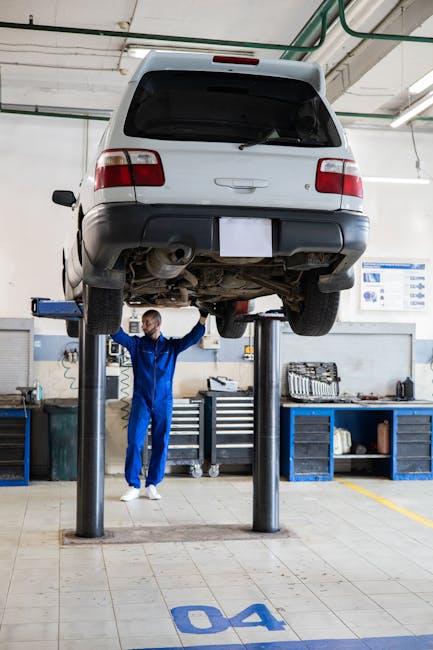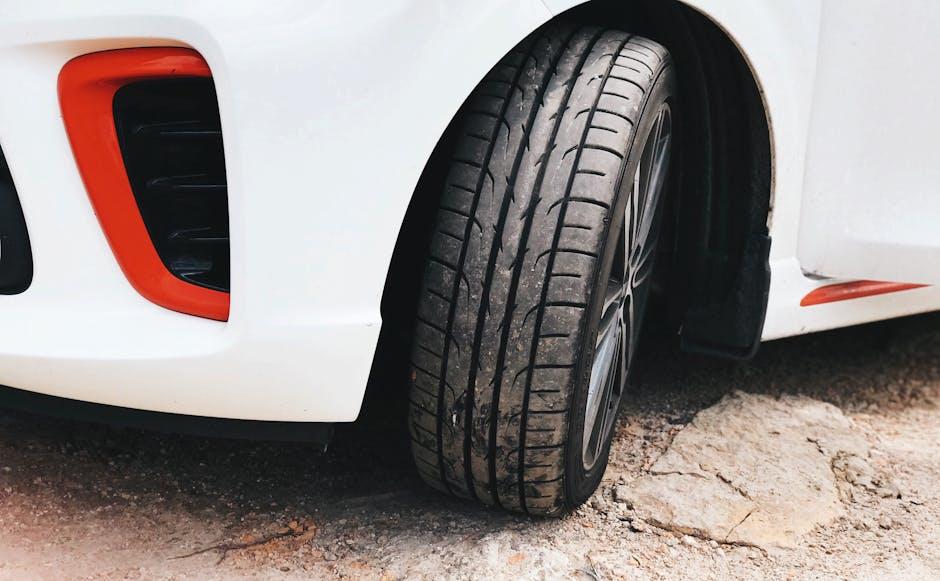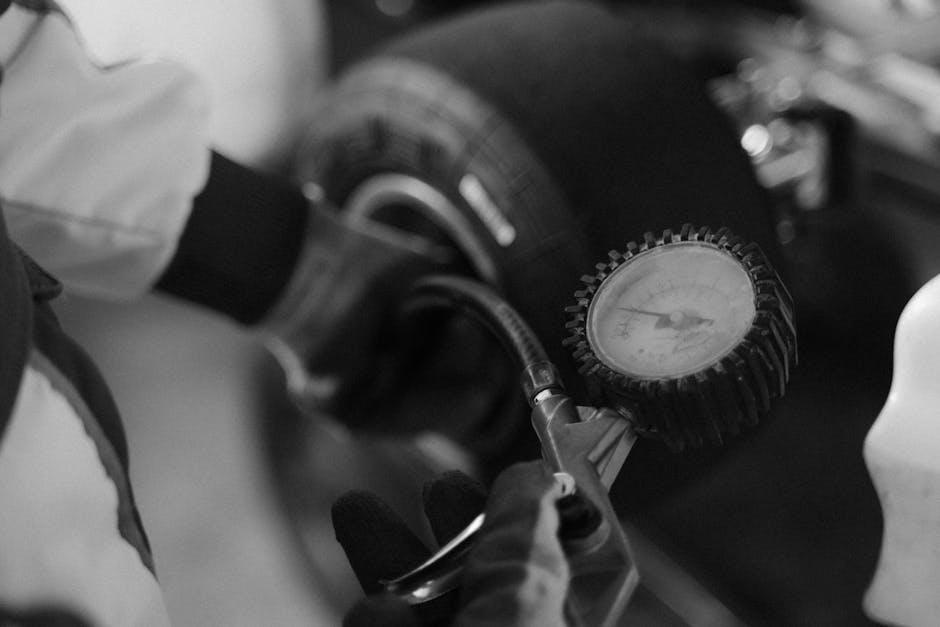In the intricate dance between a vehicle and the road, every component must move in harmony to ensure a smooth, safe journey. Among these, the wheels play a pivotal role—bearing the weight, guiding the direction, and absorbing countless miles of wear and tear. Yet, a hidden factor often overlooked by drivers silently shapes the lifespan of their tires: wheel alignment. Beyond mere maintenance jargon, proper alignment is a subtle guardian of tire longevity, influencing not only how your car handles but also how long your tires last. In this article, we delve into the essential role wheel alignment plays in preserving tire health, exploring why this precise adjustment deserves a spot on every vehicle owner’s maintenance checklist.
Table of Contents
- Understanding Wheel Alignment and Its Impact on Tire Wear
- How Misalignment Accelerates Tire Damage
- Signs Your Vehicle Needs a Wheel Alignment Check
- The Role of Regular Maintenance in Extending Tire Life
- Professional Alignment Techniques That Maximize Durability
- Tips for Drivers to Maintain Proper Wheel Alignment Between Services
- Q&A
- The Conclusion

Understanding Wheel Alignment and Its Impact on Tire Wear
The precise alignment of your vehicle’s wheels isn’t just a mechanical detail; it’s a crucial factor that directly influences how evenly your tires wear over time. Misalignment causes tires to scrub unevenly against the road surface, leading to premature wear and the potential for costly replacements. When wheels aren’t aligned correctly, you might notice your vehicle pulling to one side or the steering wheel vibrating, both indicators of increased tire stress. Ensuring your wheels are aligned correctly not only enhances driving comfort but also maximizes the lifespan of your tires, ultimately saving you money and reducing environmental waste.
Several key aspects define proper alignment, including toe, camber, and caster angles. Each plays a vital role in tire contact with the road:
- Toe: The inward or outward angle of the tires when viewed from above affects straight-line stability.
- Camber: The tilt of the tires inward or outward from the vertical impacts tire tread wear on either the inside or outside edges.
- Caster: The angle of the steering pivot helps maintain directional stability during driving.
| Alignment Aspect | Impact on Tire Wear | Signs of Misalignment |
|---|---|---|
| Toe | Causes feathering & uneven side wear | Vehicle pulls left or right |
| Camber | Unequal wear on inside or outside edges | Tires wear faster on one edge |
| Caster | Affects steering feel and stability | Steering wheel vibration |

How Misalignment Accelerates Tire Damage
When your wheels are not properly aligned, the tires bear uneven stress across their surface. This imbalance causes certain areas of the tire tread to wear down faster than others. Over time, these accelerated wear patterns lead to premature tire replacement, increased fuel consumption, and a compromised driving experience. Even subtle misalignments can cause your tires to scrub against the road instead of rolling smoothly, which exacerbates the damage silently but surely.
Key symptoms of this damage include:
- Feathered tread edges resulting from improper camber or toe settings
- Patchy tread wear where sections of the tire wear unevenly
- Increased vibration felt in the steering wheel due to uneven tire contact
To visualize how misalignment patterns affect tire wear, consider the following:
| Misalignment Type | Wear Pattern | Impact on Tire |
|---|---|---|
| Camber Out | Inner edge wear | Reduces tread life on inner side |
| Camber In | Outer edge wear | Causes early shoulder damage |
| Toe In | Scalloped or feathered tread | Leads to noisy, uneven grip |
| Toe Out | Excessive outer tread wear | Compromises vehicle stability |

Signs Your Vehicle Needs a Wheel Alignment Check
When driving, subtle yet persistent issues can hint that your wheels are out of alignment. Uneven tire wear is a primary sign, where one section of the tire shows more wear than the others. If you notice your vehicle pulling to one side even on straight roads, or if your steering wheel isn’t centered when driving straight, these are clear indicators that alignment should be checked. Additionally, a vibrating or shaky steering wheel during acceleration or at higher speeds is a warning you shouldn’t ignore.
Be on the lookout for these common symptoms:
- Tires wearing out faster on edges
- Steering wheel off-center
- Vehicle pulling left or right
- Unusual steering vibrations
| Symptom | Potential Cause | Urgency |
|---|---|---|
| Uneven Tire Wear | Misaligned Camber or Toe | High |
| Steering Pull | Incorrect Caster or Toe | Medium |
| Vibrations | Imbalanced or Misaligned Wheels | Medium |

The Role of Regular Maintenance in Extending Tire Life
Consistent maintenance plays a pivotal role in maximizing the lifespan of your tires. By regularly checking and adjusting wheel alignment, you ensure that your tires make proper contact with the road, reducing uneven wear and tear. This not only improves your vehicle’s handling but also minimizes the risk of premature tire replacement, saving you both time and money in the long run. Incorporating routine inspections for tire pressure, tread depth, and rotational patterns into your maintenance schedule can dramatically prolong tire durability and performance.
Here are some key maintenance practices to keep your tires in optimal condition:
- Frequent wheel alignment checks to avoid irregular tread wear
- Maintaining recommended tire pressure for better fuel efficiency and tire resilience
- Regular tire rotations to promote even wear across all tires
- Periodic balancing for a smoother driving experience and reduced vibration
| Maintenance Task | Recommended Frequency | Impact on Tire Life |
|---|---|---|
| Wheel Alignment | Every 6,000 miles or after impact | Prevents uneven wear, enhances longevity |
| Tire Rotation | Every 5,000 to 7,000 miles | Ensures even tread wear |
| Tire Pressure Check | Monthly | Optimizes fuel economy and tread life |
| Balancing | During tire installation or if vibration occurs | Improves ride comfort and tire durability |

Professional Alignment Techniques That Maximize Durability
Precision is key when it comes to adjusting your vehicle’s alignment to enhance tire durability. Skilled technicians employ a combination of advanced tools and keen diagnostics to ensure each wheel is angled perfectly toward optimal contact with the road. The process often includes fine-tuning the camber, caster, and toe angles to reduce uneven tire wear and improve overall handling. This meticulous approach ensures the tires distribute pressure evenly, minimizing risks of premature tread erosion and potential blowouts.
To achieve this, professionals typically follow a structured alignment routine, which includes:
- Initial vehicle inspection to identify any suspension or steering issues
- Measurement of current alignment settings against manufacturer specifications
- Adjustments to correct deviations in wheel angles
- Test drives to confirm the stability and performance improvements
| Alignment Aspect | Effect on Tire Wear | Common Adjustment |
|---|---|---|
| Camber | Prevents inner or outer edge wear | Tilting wheel to vertical |
| Caster | Enhances directional stability | Tilting steering pivot |
| Toe | Avoids excessive scrubbing on turns | Adjusting angle between front of tires |

Tips for Drivers to Maintain Proper Wheel Alignment Between Services
Staying vigilant about your vehicle’s alignment between professional checks can save you from uneven tire wear and costly repairs. Regularly inspecting tire pressure ensures that your tires maintain the correct grip on the road, which directly impacts alignment performance. Also, be mindful of your driving habits: avoiding potholes, sharp turns, and sudden stops helps keep the suspension and alignment intact. Simple actions like rotating your tires every 6,000 to 8,000 miles can also promote even wear, helping your wheels stay in proper sync.
Besides driving carefully and maintaining appropriate tire pressure, keeping an eye on your vehicle’s handling is key. If you notice the car pulling to one side or a crooked steering wheel when driving straight, these are signs your alignment may be off. Here’s a quick checklist to self-monitor wheel health:
- Visual Inspection: Look for uneven tread wear or tire bald spots.
- Steering Feel: Check if the steering wheel vibrates or drifts.
- Suspension Sounds: Listen for clunks or squeaks when turning or accelerating.
- Response Time: Notice any delay in vehicle response when steering.
Q&A
Q&A: The Importance of Wheel Alignment for Tire Longevity
Q1: What exactly is wheel alignment?
A: Wheel alignment refers to the precise adjustment of your vehicle’s suspension system, ensuring that the tires meet the road at the correct angle. Proper alignment means your wheels are pointing straight ahead and working in harmony, which optimizes tire contact with the road.
Q2: How does wheel alignment affect tire longevity?
A: When wheels are misaligned, tires wear unevenly—often faster on the inside or outside edges—leading to premature tire degradation. Proper alignment distributes weight evenly across the tires, promoting uniform wear and extending their usable life.
Q3: Can I tell if my wheels are misaligned just by looking at my tires?
A: Sometimes. Uneven tire wear, such as cupping, feathering, or rapid tread loss on one side, can indicate poor alignment. However, subtle misalignment issues might not be visually obvious, so professional checks are recommended.
Q4: What are the consequences of neglecting wheel alignment?
A: Ignoring misalignment can lead to costly consequences beyond just faster tire wear. It can cause poor handling, decreased fuel efficiency, increased strain on suspension components, and ultimately compromise vehicle safety.
Q5: How often should I get my wheel alignment checked?
A: It’s good practice to check wheel alignment annually or every 12,000 miles, whichever comes first. Additionally, if you notice symptoms like your car pulling to one side or uneven tire wear, schedule an alignment promptly.
Q6: Is wheel alignment a complicated or expensive service?
A: Wheel alignment is a routine maintenance service typically performed quickly and affordably at most auto shops. Considering the extended tire life and improved driving safety it offers, it’s a worthwhile investment.
Q7: Can I just replace my tires instead of worrying about alignment?
A: While new tires improve performance temporarily, without addressing alignment, the same wear issues will reoccur. Proper alignment protects your investment in new tires and ensures they last as long as possible.
Q8: Does wheel alignment impact fuel efficiency?
A: Yes. Misaligned wheels increase rolling resistance, making your engine work harder and consume more fuel. Proper alignment helps your vehicle glide efficiently, saving gas over time.
Q9: Can wheel alignment problems cause vibrations or noises?
A: They can. Misaligned wheels often create vibrations felt in the steering wheel or produce uneven tire wear sounds during driving. These signs indicate it’s time for a professional alignment check.
Q10: Is wheel alignment the same for all vehicles?
A: The principles are the same, but alignment specifications vary based on the make, model, and suspension design of the vehicle. Skilled technicians customize settings to your car’s manufacturer guidelines for optimal performance.
Understanding and maintaining proper wheel alignment is a simple yet crucial step toward maximizing your tires’ lifespan, improving safety, and enhancing overall driving comfort. Don’t overlook this key aspect of vehicle care!
The Conclusion
In the intricate dance between vehicle and road, wheel alignment acts as the silent choreographer, ensuring each step is precise and balanced. By paying attention to this often-overlooked maintenance task, drivers not only extend the life of their tires but also enhance safety and optimize performance. Ultimately, investing a little time and care into wheel alignment is a small price to pay for the smoother, more efficient journeys ahead—where every mile is kinder to your tires and your wallet alike.

